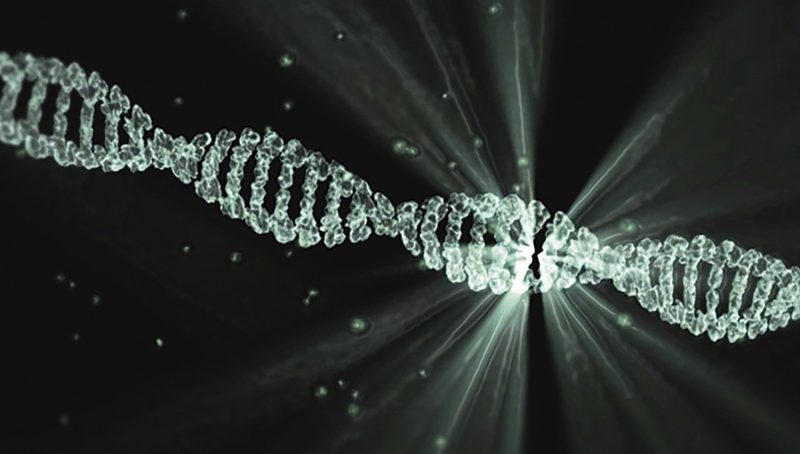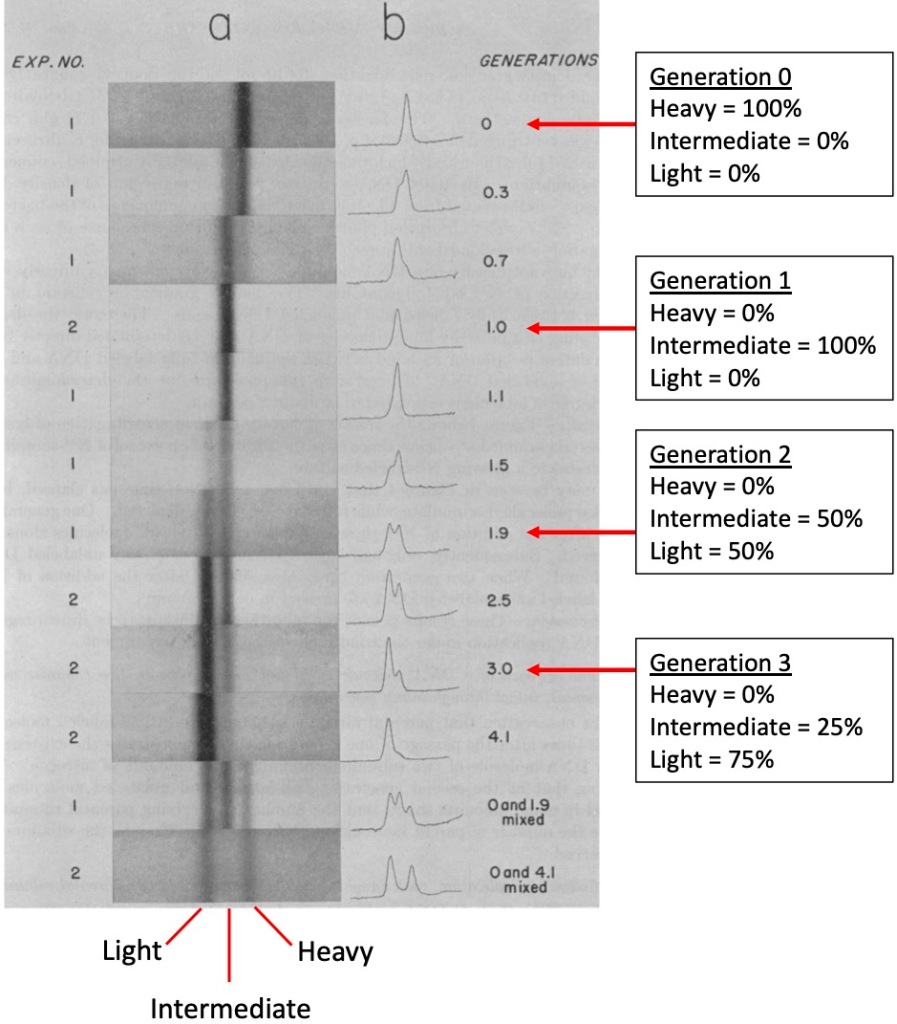
DNA replication in a hundred words
Semi-conservative DNA replication.
As I said, I would have thought twice at the PhD doorstep, if not because of the irresistible charm of this darn experiment.
Being a household name among all molecular biologists, the experiment was so elegantly designed and performed back in the 1950s, that the authors used exactly and only 100 words to describe their findings in the Results section.
“Figure 4 shows the results of density-gradient centrifugation of lysates of bacteria sampled at various times after the addition of an excess of N’4-containing substrates to a growing N1”-labeled culture. It may be seen in Figure 4 that, until one generation time has elapsed, halflabeled molecules accumulate, while fully labeled DNA is depleted. One generation time after the addition of N 14, these half-labeled or “hybrid” molecules alone are observed. Subsequently, only half-labeled DNA and completely unlabeled DNA are found. When two generation times have elapsed after the addition of N’4, half-labeled and unlabeled DNA are present in equal amounts.”
— — Meselson & Stahl, PNAS, 1958
And I foolishly thought that is all you need to do and say for every scientific finding.
(Did you try to read the whole quote? Real scientists always scroll down and go for the figures first for visual pleasure, down there :D)
We know quite a bit about DNA today. But back then, all scientists knew about DNA, our genetic material, was that it copies itself exactly once before each cell division. How it is done was a mystery, but there were three hypothesised models.
The dispersive model proposes that a double-helix DNA is unwound mechanically which breaks it into smaller double-helix fragments for replication, resulting in a hybrid product with new and old material alternating along the stretch of a DNA molecule. In the conservative model, the whole molecule of old DNA is used as a template for copy and paste, thereby generating a clone DNA made of entirely new material. Finally, the semi-conservative model, endorsed by Watson and Crick themselves (co-authors of DNA structure model), suggests that each strand of the old DNA is used as the template for the two progeny DNA products.
All biologists now know DNA replicates in a semi-conservative manner. Google knows. Perhaps Siri too. But if you cannot prove it, it is not better than any bedtime story for you child. It took almost one decade of guessing among scientists before Meselson and Stahl closed the case, once and for all.
Imagine a DNA molecule being a two-piece lego block, and the one you have contains two black pieces stacked together. Assuming semi-conservative is the way to go, you would separate them, grab two new pieces (only white pieces available on your table) and combine each of them to the separated old black piece, making two new lego blocks. If you allow me to cheat on your colour vision, that makes two grey (black+white) blocks. Now do another round of replication, you get two grey and two white blocks. Continue and you will get a beautiful fraction of different colours after each replication which can be predicted with elementary maths.

That’s it.
Yep, that is what Meselson and Stahl showed succinctly in their publication. Of course they could not see the colour of DNA strands, but they could determine how much they weigh, using a method known as density-gradient ultracentrifugation. Simply, they started with bacteria cells containing only heavy DNA, then fed them only with materials to make light DNA, and weighed their DNA after one cell division, then two, and so on.
In their paper, after using three simple figures to introduce the technique to be used, the authors presented the legendary Figure 4 mentioned in the above quote.

Instead of having DNA blocks of different colours, Meselson and Stahl separated the heavy, intermediate and light DNA blocks by ultracentrifugation. After quantifying the density of the DNA blocks which appear as bands on a graph, they got nothing but the divine fractions precisely as we predicted above.
Such beauty.
But hang in there, and don’t be fooled by this one magical experiment. There are far more scientific discoveries that have undergone excruciating experimentation and tedious analyses than those that have not. In my next snippet, I will walk you through one of the more painful yet rewarding journeys of molecular biology.
Feature photo from pixabay


0 comments